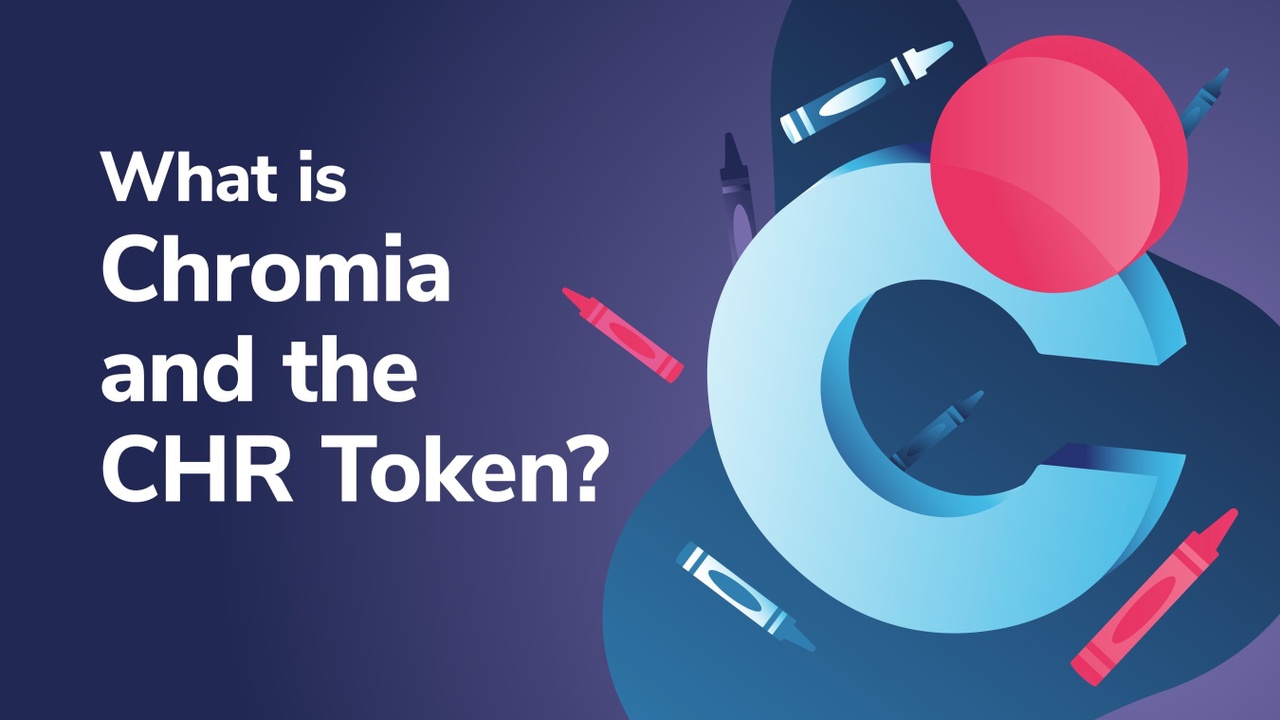
Chromia is a multi-functional innovative blockchain-based platform offering developers a simple-to-use landscape for easy-to-scale decentralized applications (dApps). Created by ChromiaWay, using a fresh approach to blockchain development with relational architecture, Chromia blockchain has seen successful adoption of the platform including enterprise, decentralized finance (DeFi), and blockchain-based gaming applications. Moreover, the Chromia (CHR) token powering the Chromia ecosystem offers multi-utility alongside rewards and benefits for all participants within the Chromia platform. Also, there are various Chromia staking bonuses for CHR token holders exclusive to Chromia-based applications.
In this article, we’re going to dive deep into the platform’s ecosystem, exploring the fundamentals of the Chromia blockchain. Also, we’ll look at the various roles of the CHR token, plus discover the Chromia staking mechanisms and rewards available to Chromia token holders.
Chromia is a smart contract-enabled blockchain that allows developers to create decentralized applications (dApps) with the use of smart contracts. If you’d like a breakdown of the basics of blockchain technology, see our Blockchain & Bitcoin 101 course at Ivan on Tech Academy! We cover all the fundamentals from mining nodes to UTXOs! Moreover, our Ethereum 101 course discusses the difference between the two biggest blockchains, plus a deep dive on smart contracts, the Ethereum Virtual Machine (EVM), and the origin of decentralized finance (DeFi). Join Ivan on Tech Academy today to discover a community of over 30,000 like-minded students!
Background
In 2012, three years following the launch of Bitcoin, Alex Mizrahi developed the concept of creating ‘tokens’ on the Bitcoin blockchain. These tokens were known as “Colored Coins” which managed and represented real-world assets on the world’s biggest blockchain. Mizrahi worked with a young “wiz-kid programmer” at the time, writing the Colored Coins whitepaper. As it happens, that young programmer was Vitalik Buterin! It is highly probable that “Colored Coins” had some influence on the development of the second-largest blockchain, launched in 2015, Ethereum.
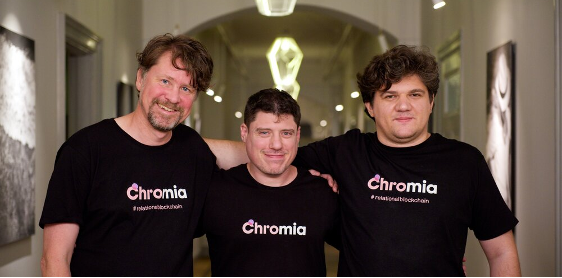
In 2014, ChromaWay was founded by Alex Mizrahi as CTO, Or Perelman as COO, and Iddo Bentov and Henrik Hjelte as CEO. ChromaWay was designed to expand on and commercialize the concept of Colored Coins. The innovative blockchain company created a new type of blockchain architecture, known as a relational blockchain. ChromaWay’s initial blockchain, Postchain, was designed using the relational architecture to index Colored Coins. However, as development progressed, it became clear Postchain was optimal as a private enterprise blockchain. Since deployment, Postchain has been used by governments issuing digital licenses, blue-chip companies, and development in green finance.
ChromaWay remains a true open-source project and, following Postchain, launched the Chromia blockchain after successful fundraising rounds throughout 2018-2019. Chromia is a blockchain designed to eliminate scalability issues for developers. Moreover, ChromaWay states the Chromia blockchain offers a user and developer experience, unlike any other blockchain.
What is Chromia?
Chromia is a smart contract-enabled blockchain created as an open-source development landscape for anyone to create decentralized applications, using blockchain for social good. Using the relational blockchain architecture, Chromia can be used as a public, private, or hybrid model blockchain. Furthermore, the platform can even be used as an Ethereum layer 2 scaling solution. This is exemplified by Hedget, offering a decentralized marketplace for financial options.

From a user's perspective, the Chromia blockchain offers transaction fees and confirmation times that are very competitive within the industry. It also offers super fast and easy deployment of applications from a programmer’s perspective, with an intuitive developer journey. The Chromia blockchain aims to cover all development opportunities and possibilities, from creating transparent financial applications for enterprise use and various Chromia staking mechanisms, decentralized gaming, and decentralized social network applications having full logic on-chain.
Chromia (CHR) Token
The native Chromia (CHR) token is referred to as the “bread and butter” of the project’s ecosystem. As a multi-functional utility token, the CHR token was designed to create mutually beneficial incentives for all participants across the platform. This includes investors, developers, and non-technical users of Chromia-based decentralized applications (dApps).
Similar to how the Ethereum gas fee model operates, Chromia’s CHR token is also used to pay for gas fees on its network. CHR tokens that are used as gas fees are awarded to block-producing nodes within the network, compensating for their good behavior and network up-keep.
In addition to gas fees and node rewards, the CHR token is used as a desired medium of exchange within the Chromia economy. Further, decentralized applications (dApps) can save Chromia tokens as a reserve to peg their own tokens to. Moreover, there are several different Chromia token accounts featured across the network, offering holders exclusive opportunities and discounts.
Finally, the Chromia token (CHR) is used for staking. This provides a layer of security and incentivization for CHR token holders who are nodes, to behave honestly and potentially earn a passive income with crypto.
Chromia Staking Mechanism
There are several different staking programs for Chromia (CHR) token holders. However, all CHR token staking is achieved through interacting with the single TwoWeeksNotice smart contract. This particular smart contract implements the core logic of Chromia token staking. In short, the Chromia staking contract is designed to stake users’ CHR tokens. Users advise of their Chromia token withdrawal 14 days in advance before receipt of their funds. The contract then automatically releases the funds, returning to the provided wallet address.
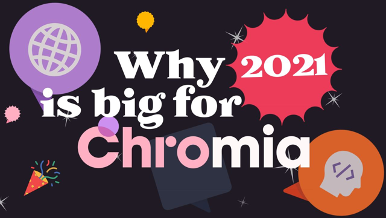
In November 2020, the Chromia Proposals program introduced CHR token holder governance rights of the Chromia platform. Designed to avoid whales manipulating the voting, the Chromia Proposals program allows token holders to stake their CHR tokens to enable them to make proposals and to vote on others. Users can unstake their CHR tokens at any time (including the 14 day unlock period).
Also, the “Chromia Provider Stake Delegation” protocol came into fruition during the same time. This allows users to delegate their stake to other users who don’t meet the minimum requirement needed to stake for governance proposals. This is an innovative way of supporting a project proposal indirectly, without the risk of users’ funds being slashed, and the ability to still use other staking mechanisms within the Chromia ecosystem.
Additionally, applications built on the Chromia blockchain can also introduce benefits for Chromia (CHR) token stakers. For example, a previous trading competition hosted by Hedget offered additional rewards to CHR token stakers.
Chromia Blockchain for Games
Blockchain-based gaming is a rapidly evolving industry, helping to implement the mass adoption of cryptocurrency with ease. Unlike centralized game providers, decentralized games offer gamers the chance to actually own their in-game assets, thanks to blockchain technology.
Moreover, the Chromia blockchain is ideal for decentralized games as it offers effortless development tools and scaling facilities. Below we’ve discussed a couple of blockchain-based games developed within the Chromia ecosystem.
Chain of Alliance
As a completely decentralized blockchain-based gaming application, Chain of Alliance is an auto battler multiplayer strategy game. There are up to eight players available in each round, each being matched with a cryptographically verifiably random opponent.

The game objective is relatively straightforward; to place the best characters in your team against your opponents to automatically battle. To win, gamers must discover the correct strategy for placing characters and items with the right synergies in the right position.
My Neighbor Alice
As an alternative style of gaming to Chain of Alliance, My Neighbor Alice is a multiplayer virtual land game, where users can create their own virtual farms and interact with others. The blockchain-designed game is based on the popular centralized gaming app Farmville.
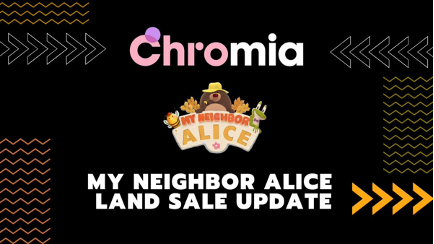
However, My Neighbor Alice allows ALICE token and CHR token holders to purchase virtual land. The My Neighbor Alice LAND sale is soon launching in May 2021, with the opportunity for users to stake their ALICE and CHR tokens to earn tickets for a lottery to purchase LAND at the pre-sale price.
Chromia Blockchain for DeFi
The relational architecture offered through the Chromia blockchain is foundationally crucial for certain decentralized financial instruments. Often, with the derivatives and options markets, the lag in on-chain settlement means such services are not suitable for blockchain optimization. However, using the Chromia blockchain infrastructure, Hedget was created to resolve these limitations. Hedget supports a range of decentralized financial tools including decentralized insurance thanks to its relational foundations. These types of financial instruments require advanced querying and complex business logic that most blockchains are unable to achieve. Hedget, however, offers seamless user and developer experience taking blockchain technology to the next level.
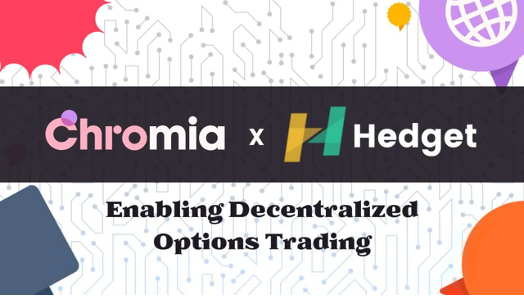
For our readers who have yet to invest in cryptocurrency or try out any DeFi protocols, Ivan on Tech Academy can provide video-guided industry expert-led tutorials on how to safely enter the world of crypto. Check out our Crypto Basics course for creating an exchange account, storing your wealth, and tips to avoid scams! Then, our DeFi 101 course is ideal for anyone looking to get involved in decentralized finance (DeFi)! You’ll learn how to install and navigate the most popular Web3 wallet in the industry, MetaMask. Also, you’ll discover how to use your new wallet with several major DeFi projects too, including Uniswap, Aave, and Compound! Learn how to get into DeFi today, at Ivan on Tech Academy!
Chromia Blockchain for Enterprise
In addition to decentralized gaming and financial applications, the platform has also been adopted with several enterprise use cases.
LAC PropertyChain
LAC PropertyChain is a land ownership management platform for Latin American and Caribbean property exchange. The open-source platform uses smart contracts to offer land registry updates with simply a mobile phone. All parties involved in the transaction including government agencies, banks, surveyors, and property owners and transparently notified of any updates in real-time. LAC PropertyChain is sponsored by the Inter-American Development Bank, and aims to bring “trust, simplicity, and security to property exchange”.
Lingon
Lingon is a platform built on the Chromia blockchain to create unique certificates as proof of authenticity, alongside digital identities. As blockchain technology is beginning to creep into all businesses dealing with finance or data transactions, the demand for a cryptographically secure digital identity is growing rapidly. Lingon makes it easy for anyone to create unique digital assets, securing value, and presenting proof of ownership.
Chromia Blockchain for Fair Applications
ChromaWay designed the public relational blockchain to be used for applications that are created for social good. Chromia blockchain aims to host an enriching and self-sustaining ecosystem of applications that provide utility and benefit to its users and/or wider society.
Green Assets Wallet
Created by a group of capital market leaders, Green Assets Wallet (GAW) is the first decentralized application (dApp) created on the Chromia blockchain working toward green finance.
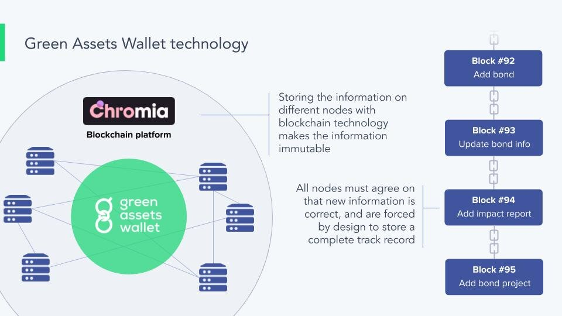
GAW offers insights and impact reporting in addition to green bond validation on capital investments. The public and transparent KPIs (key performance indicators) can help investors make decisions with which investments to make, having the least ecological impact.
Chromunity
Still in the testnet phase, Chromunity is a decentralized social network built on top of the Chromia blockchain. Chromunity is the Chromia team’s take on a collaborative approach of different social media models, allowing users to post updates and upvote others’ posts. Also, the Chromunity platform features a governance section which soon will include a representatives and elections section.
Chromia’s community is engaging and interactive across many platforms, with global participation. You can follow the Chromia team and updates on Facebook, Instagram, Twitter, LinkedIn, YouTube, Telegram, and Discord. If that’s not enough, Chromia has its own blog with regular updates about the project! This includes Chromia staking incentives, application developments, and project updates.
Chromia Blockchain & CHR Token Summary
Chromia is helping to take blockchain technology to the next level, infiltrating a relational database that’s publicly accessible and simple to navigate. The platform boasts various advantages for developers catering to a range of industries, including gaming, enterprise, and decentralized finance (DeFi). This is achieved through slick end-to-end development and user experience (UX).

The Chromia token offers several benefits and rights to holders. Moreover, some gaming applications created using Chromia offer exclusive added benefits for CHR token holders or stakers. Chromia has already created an engaging and diverse ecosystem of applications, including Chromia staking mechanisms, with the technological infrastructure to cater to different industries and demographics. Further, one of the key elements of blockchain development, scalability, is of no issue with the Chromia blockchain. The project appears to have strong fundamentals, with the potential to perform well during the 2021 Bitcoin bull run.
If you would like to create your own decentralized application (dApp) Ivan on Tech Academy can help you achieve this, regardless of your background or experience! If you’re completely new to programming, see our Javascript Programming for Blockchain Developers course to learn the basic elements of coding. Then, you will have sufficient knowledge to move on to our Ethereum Smart Contract Programming 101 course to learn the Ethereum Solidity programming language. From here, the options are endless! Check out our Ethereum Smart Contract Programming 201 course to learn how to deploy your own decentralized exchange (DEX)! Or, see our Ethereum Game Programming course to discover how to launch your own decentralized marketplace and non-fungible tokens (NFTs)! For everything you need to know to get started in blockchain, join Ivan on Tech Academy today! Also, don’t forget to follow us on Twitter @Academy_IOT! We’d love to hear your thoughts about Chromia!
